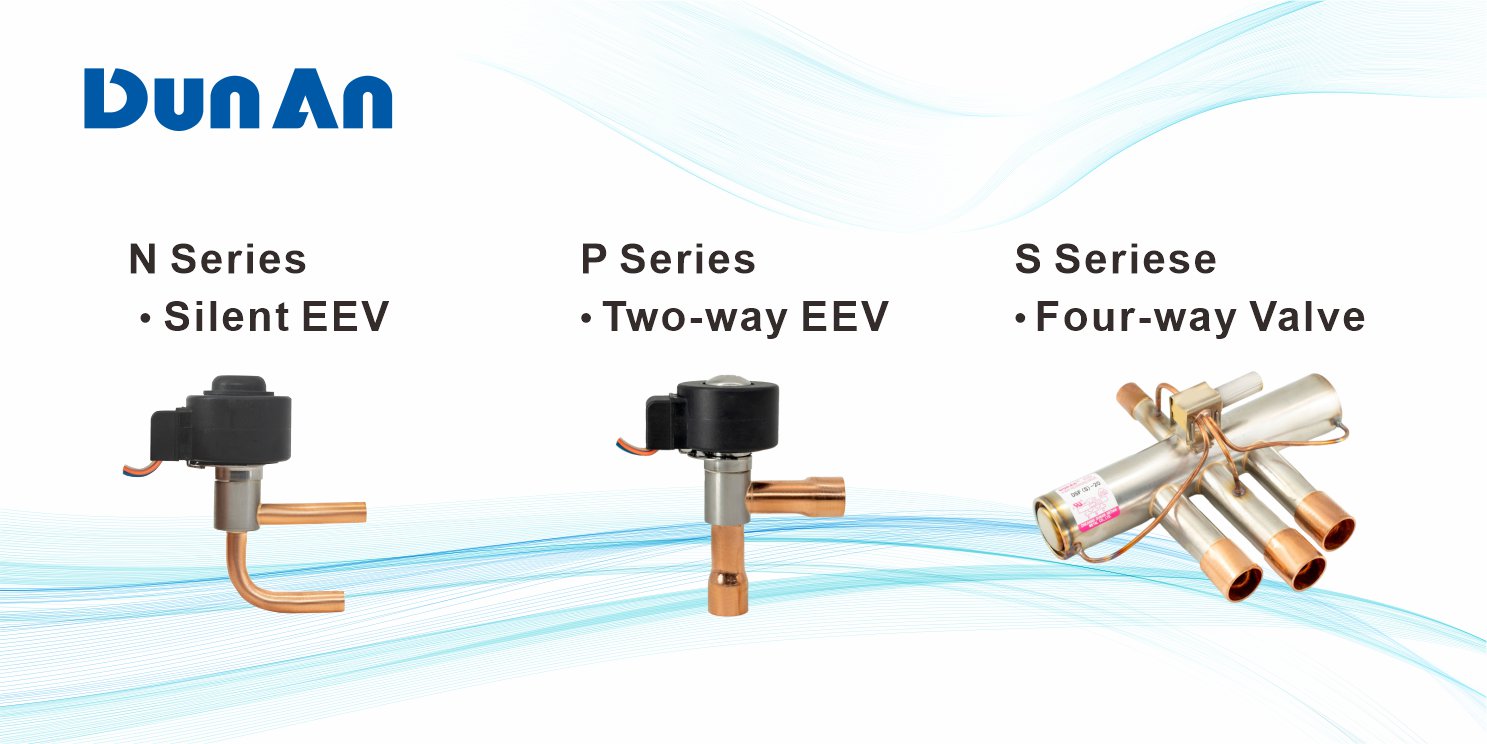Technical Trends of Rotary Compressors
2018-04-27
— Continued from March IssueContributed by Masataka Yamane, HVACR advisor
Multiple Compressor Types
Two-piston
Rotary compressors take in, compress, and discharge refrigerant in one rotation. The pressure in the compression chamber during one rotation changes depending on the rotation angle. This creates a large difference in the rotational torque of the electric motor and the compressive force (load torque) in the compression chamber, resulting in an uneven rotational speed and increased compressor vibration.
In particular, when the compressor is operating at a low speed, vibration is noticeable. In order to solve this problem, a two-piston type rotary compressor was developed. The two-piston type sets the two pistons apart at a 180 degree angle in order to balance the mass of two pistons, leading to small torque fluctuations and a substantial decrease in vibration in the direction of rotation. The two-piston type compressor can be produced on existing production lines, giving it the advantage of relatively low cost. As a result, the two-piston rotary compressor is widely used today for inverter air conditioners.
One-piston
Production costs for two-piston compressors are higher than those of one-piston compressors. With a view to reducing costs, manufacturers have worked on ways to achieve low-vibration operation with inverter-driven one -piston rotary compressors. They employed power electronics technology to achieve torque control, which reduces vibration by aligning the load torque created from compression with the electric motor torque. This enabled one-piston rotary compressors to also operate at low speeds with little vibration, although one-piston types are inferior in level to the two-piston type rotary compressor.
Swing Type
Swing-type rotary compressors are a family of rolling piston rotary compressors and have a unique design around the vane. A standard rotary compressor has separate piston and vane parts, but a swing-type compressor has an integrated piston and vane, with compression occurring in the cylinder. This is said to achieve advantages including reduced gas leaks, high efficiency regardless of capacity size, little vibration, and high durability.
Variable Cylinder Type
The variable cylinder rotary compressor was developed from the two-piston rotary compressor. During low-load operation, inverter air conditioners may operate intermittently even when the capacity is reduced to a minimum level. The variable cylinder rotary compressor can operate continuously with low energy consumption even at low-load operation. It reduces its compressor capacity by half to do this, by retracting the vane of one of its two compression chambers into the cylinder’s spring during low-load operation to stop the compression action. This enables continuous compressor operation even during low load operation of the inverter air conditioner. Eliminating intermit-tent operation enables comfortable and energy-efficient air conditioning during times of low load such as in between seasons.
Two-stage Compression
A two-stage compressor able to compress high- pressure refrigerant such as CO2 divides compression into two stages using one two-piston rotary compressor. The compressed CO2 in the first compression chamber is delivered to a second compression chamber, where it is com-pressed further. Vapor refrigerant is injected from a gas-liquid separator located between the discharge port of the first chamber and the second chamber. This keeps the discharge temperature of the CO2 refrigerant from overheating and enables compression of the CO2 refrigerant, which is difficult to compress sufficiently in one stage. This two-stage compression type rotary compressor is used in heat pump water heaters capable of supplying high-temperature hot water.
Scrotary
The so-called scrotary compressor has been developed and adopted in commercial CO2 heat pump water heaters. It uses a two-stage compression refrigeration cycle with a gas-injection cycle. Due to the properties of this refrigeration cycle, the differential pressure is higher on the high-stage side than on the low-stage side. Taking this into account, the hot water heater uses two-stage compression with a rotary compressor design on the low-stage side, which demonstrates efficiency when there is low differential pressure, and a scroll compressor design on the high-stage side, which demonstrates efficiency when there is high differential pressure, attached to either end of the electric motor. This structure is able to substantially increase heating performance when the outdoor temperature is low.
Developed by Mitsubishi Heavy Industries Thermal Systems, this compressor was used for heat pump water heaters, and then applied to 10-hp condensing units using CO2 refrigerant in April 2017, and 20-hp condensing units will be released in May 2018. Its applications are expected to further expand.
Larger Capacities
 In general, rotary, scroll, and screw compressors each have their own capacity range, but each type has also been expanding the upper limit of its capacity range in recent years. Rotary compressors have posed a challenge at higher capacities, but the development of two-piston types have led to rotary compressors with larger capacities that offer high efficiency with low vibration and leakage. Large rotary compressors are now available up to 20 hp. These larger capacity rotary compressors are often used in variable refrigerant flow (VRF) systems, modular chillers, and commercial heat pump water heaters.
In general, rotary, scroll, and screw compressors each have their own capacity range, but each type has also been expanding the upper limit of its capacity range in recent years. Rotary compressors have posed a challenge at higher capacities, but the development of two-piston types have led to rotary compressors with larger capacities that offer high efficiency with low vibration and leakage. Large rotary compressors are now available up to 20 hp. These larger capacity rotary compressors are often used in variable refrigerant flow (VRF) systems, modular chillers, and commercial heat pump water heaters.Low-load Operation
In the case of packaged air conditioners (PACs) and VRF systems for shops and office buildings sold in Japan, the revised Japanese Industrial Standards (JIS) in 2015 adopted a new calculation method for the Annual Performance Factor (APF) to include the lowest capacity in order to appreciate the system’s efficiency under more practical operating conditions. In this context in Japan, two -piston type rotary compressors are increasingly used because they can operate more efficiently at low load than scroll compressors. It is forecast that in the future, China and Europe will adopt the new APF calculation method for PACs that is used for the revised APF in Japan. In the field of relatively low-capacity PACs, the use of two-piston type rotary compressors is expected to expand further.
Moreover, in the context of increasing numbers of highly airtight and highly heat insulated residences, the improvement of operating efficiency during low load is becoming a major issue, due to the higher frequency of load occurring between the medium-to-small capacity that is smaller than the rated capacity. In order to address this issue, the above-mentioned variable cylindrical rotary compressors are being adopted, in addition to a reduction in the minimum number of revolutions of compressors, the adoption of optimum cylinder volume, and the improvement of mechanical efficiency in the small-to-medium capacity ranges, and improved mo-tor efficiency. Motors have become more efficient and lighter by shifting from ferrite magnet to a rare earth magnet, and from distributed to concentrated winding.
Meanwhile, scroll compressors generally tend to become less efficient due to over-compression during low-load operation compared with rotary compressors. In recent years, countermeasures have been adopted to improve efficiency at the low-load operation, including a relief mechanism that is triggered when over-compression occurs.
New Refrigerants
Over the last few years, there have been moves to adopt low-GWP refrigerants as a way to fight global warming. Rotary compressors also need to adapt to these refrigerants, and compressor reliability is improving, partly owing to better parts durability and the development of lubricating oils for new refrigerants.
Future Developments
The number of papers and patents on rotary compressors has fallen sharply compared with the peak of activity, and there has been scant release of new technologies. However, companies are still thought to be working behind the scenes to improve compressor performance, to enhance manufacturing efficiency and processing precision, and to reduce costs.
As with other compressor types, rotary compressor technology development would be welcomed in the coming years. In particular, the development of rotary compressors that demonstrate higher performance in regions with extremely cold and hot climates would be a major breakthrough. With the advent of the Internet of Things (IoT) and Artificial Intelligence (AI) adopted in many sectors, it is expected that technology adapted to these trends will emerge in the near future and will improve reliability and APF, as well as lengthening the lifespan of rotary compressors.





